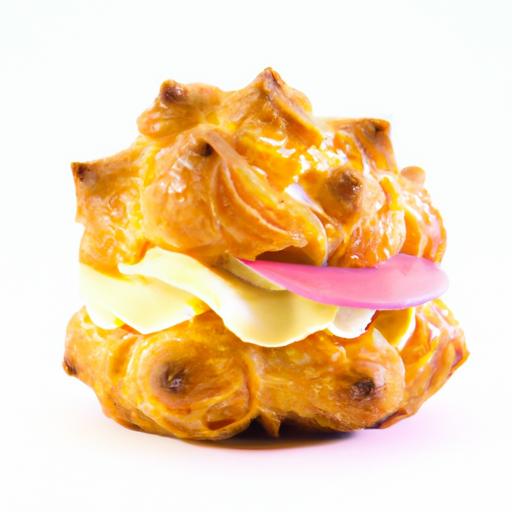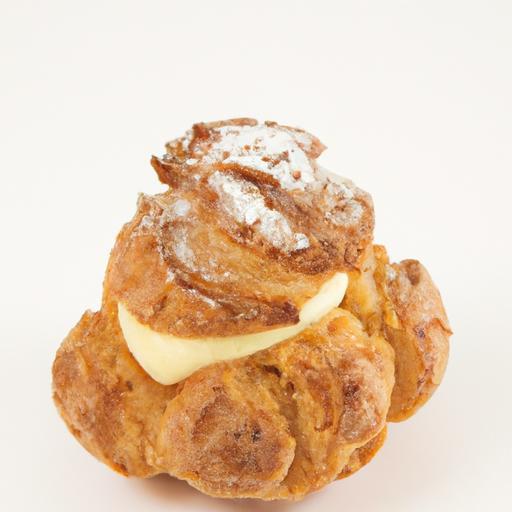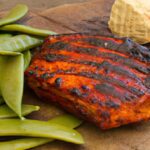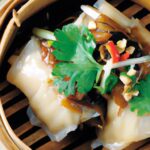In the world of baking, few creations evoke as much awe and admiration as the ethereal, golden puffs of choux pastry. These delicate pastries, with their hollow centers and crisp, buttery shells, seem almost magical-transforming from a simple dough to light-as-air wonders in the oven’s embrace. But behind this enchanting alchemy lies a captivating science, a precise dance of ingredients, heat, and technique. Welcome to the fascinating exploration of mastering the magic: the science behind perfect choux pastry. Here, we’ll unravel the secrets of steam-powered rise, gluten development, and moisture control, turning every baker into a pastry sorcerer armed with knowledge as powerful as any spell. Whether you’re a curious novice or a seasoned pro, understanding the science will elevate your choux to irresistible new heights.
Understanding the Chemistry of Choux Dough for Flawless Texture
Mastering the Magic: The Science Behind Perfect Choux Pastry is more than a catchy phrase-it’s an invitation to unlock the secrets behind the ethereal lightness and captivating crispness of classic choux pastry. Rooted in French culinary tradition, this delicate dough achieves its signature puff from a precise balance of moisture, heat, and flour gelatinization, creating a hollow shell perfect for sweet or savory fillings. As someone who’s spent countless hours perfecting this baking marvel, I can attest that understanding the science behind choux dough allows you to elevate your pastry game and achieve a flawless rise every time.
Prep and Cook Time
- Preparation: 20 minutes
- Cooking (Stovetop + Baking): 40 minutes
- Total: 1 hour
Yield
Approximately 24 medium-sized choux buns
Difficulty Level
Intermediate – some experience with baking recommended
Ingredients
- 1 cup water, preferably filtered
- 8 tbsp (113g) unsalted butter, cut into cubes
- 1/2 tsp fine sea salt
- 1 tbsp granulated sugar (optional for sweeter dough)
- 1 cup all-purpose flour, sifted
- 4 large eggs, at room temperature
Instructions
- Preheat your oven to 400°F (200°C). Line two baking sheets with parchment paper or a silicone mat.
- Combine water, butter, salt, and sugar in a medium saucepan over medium-high heat. Stir occasionally until the butter melts and the mixture reaches a rolling boil.
- Remove the pan from the heat and immediately add all the sifted flour at once. Stir vigorously with a wooden spoon until the dough forms a smooth ball and pulls away from the sides of the pan, about 1-2 minutes. Return the pan to low heat for 1-2 minutes, stirring constantly to dry the dough slightly.
- Transfer the dough to a stand mixer fitted with a paddle attachment or a large bowl for hand mixing. Allow it to cool for 3-5 minutes; this step is crucial to avoid cooking the eggs.
- Add eggs one at a time, beating well after each addition. The dough will look shiny and smooth and should fall from the spoon in a thick ribbon. If it’s too stiff, add a small bit of egg until the desired consistency is reached.
- Fill a piping bag fitted with a large round or star tip with the choux dough. Pipe mounds about 1.5 inches in diameter onto the prepared baking sheets, spacing them at least 2 inches apart for expansion.
- Lightly mist the tops with water or use a pastry brush dipped in water to eliminate any dry surfaces that might cause cracking.
- Bake in the preheated oven for 15 minutes at 400°F (200°C), then lower the temperature to 350°F (175°C) and continue baking for an additional 20-25 minutes or until the shells are puffed, golden, and crisp. Avoid opening the oven door during baking to preserve steam and proper rise.
- Cool completely on a wire rack before filling to maintain the ideal hollow structure.
Tips for Success: Unlocking the Secrets to a Perfect Rise and Crispness
- Temperature control is everything: The initial high heat creates steam, the driving force behind rising, while the lower temperature baking ensures even cooking without burning.
- Moisture balance: The water-to-flour ratio triggers starch gelatinization that allows dough elasticity and expansion-do not skip the drying step on the stove.
- Egg integration: Adding eggs slowly and mixing thoroughly helps create a smooth, pliable dough that holds air while baking.
- Piping precision: Use consistent pressure and avoid air bubbles for an even puff and smooth exterior.
- Don’t rush cooling: Letting your choux rest preserves the hollow interior essential for custards, creams, or savory fillings.
Serving Suggestions
Once perfectly baked, choux pastries are a blank canvas ripe for endless delicious creativity. Fill them with silky vanilla pastry cream and dust with powdered sugar for a classic éclaire, or opt for a savory touch with herbed cream cheese and smoked salmon. For an elegant presentation, garnish with delicate microgreens or edible flowers. Their crisp texture beautifully contrasts with soft fillings, making every bite a delightful experience. Consider pairing with a warm cup of tea or a sparkling champagne for a truly refined moment.
| Nutritional Value (per choux) | Calories | Protein | Carbs | Fat |
|---|---|---|---|---|
| One medium choux shell | 95 kcal | 3g | 12g | 3.5g |
For a deeper dive on pastry flour choices and their impact on texture, explore our article on Baking Flour Guide: Which Fits Your Pastry Best? To explore the science behind starch gelatinization, visit ScienceDirect.

Q&A
Q&A: Mastering the Magic – The Science Behind Perfect Choux Pastry
Q1: What makes choux pastry so unique compared to other pastries?
A1: Choux pastry, or pâte à choux, is a marvel of baking alchemy. Unlike traditional pastries that rely on butter or fat solidifying, choux uses steam as its primary leavening agent. When the batter hits the oven’s heat, water inside instantly turns to steam, puffing up the dough into light, airy shells. This science-baked puff is what sets choux apart-it’s a dough that rises from pure water vapor power!
Q2: Why is the order of ingredients important in choux pastry?
A2: Think of choux as a carefully choreographed dance. Flour is added to boiling water and butter, creating a hot dough called panade. This cooking step gelatinizes the starches, which helps the dough hold moisture and shape. If ingredients go in too early or too late, the protein and starch interplay is disrupted, and the dough won’t puff or set properly. Precise timing ensures that the flour cooks just enough to build structure without drying out.
Q3: How does egg incorporation influence the pastry’s texture?
A3: Eggs are the magic eggs-literally! They bring fat, protein, and moisture that transform the dough from thick paste into a pipeable batter. The proteins provide elasticity and structure, while the moisture aids steam production. Too few eggs mean the pastry won’t rise fully; too many and it becomes runny and won’t hold shape. Perfectly beaten in, eggs make the difference between dense blobs and delicate clouds.
Q4: Why is baking temperature critical for choux pastry success?
A4: High heat is the ignition switch for the steam engine inside choux. If the oven’s too cool, the water won’t vaporize aggressively, leaving the pastry flat and dense. Too hot and the exterior can burn before the inside puffs through. The perfect oven environment balances initial blast heat to create steam and then a gentler phase to dry and set the airy shell without collapsing.
Q5: Can you explain why choux pastry is hollow inside?
A5: The hollow center is a direct result of rapid steam expansion. As the water turns to steam inside the dough, it inflates the soft matrix outward. The outer layer solidifies to trap the steam, forming a crisp shell while the interior becomes a light void. This natural cavity is what makes choux an ideal vessel for luscious fillings like creams or savory mousses-a little edible balloon ready to be filled with delight.
Q6: How can beginners improve their choux pastry technique?
A6: Embrace patience and precision! Use a kitchen scale for accurate measurements, don’t rush the flour cooking step, and add eggs slowly while mixing to achieve the perfect batter consistency-not too stiff, not too loose. Bake on the middle rack and resist the urge to open the oven early. Every practice gives you a better feel for the dough’s magical transformation.
Q7: What scientific tip often surprises people about choux pastry?
A7: That water content is king! Many forget that choux dough is one of the few recipes that gets “cooked” on the stovetop before baking. This cooking phase gelatinizes starch and controls moisture-key to generating the steam that blows your pastry sky-high. More water generates more steam, but balance is vital: too much and your dough won’t set; too little and you get flat, dense bites.
Discovering choux pastry is like learning a delicious science experiment in your kitchen-a little heat, a little steam, and a pinch of chemistry yield light, golden puffs that amaze the senses. Happy baking!
In Summary
As the delicate puffs of choux pastry emerge from the oven, golden and airy, we witness the perfect harmony of science and artistry at work. Mastering this magical dough is not just about following a recipe-it’s about understanding the intricate dance of heat, moisture, and gluten. Each step, from gelatinizing starch to creating the ideal steam burst, reveals the precise chemistry that transforms a humble mixture into a sublime culinary masterpiece. So, armed with knowledge and curiosity, every aspiring baker can unlock the secrets of choux, turning kitchen experiments into moments of edible enchantment. After all, behind every crisp, hollow shell lies a world of science waiting to be savored.


